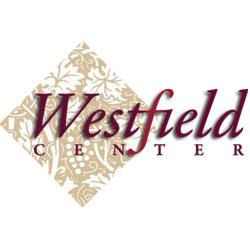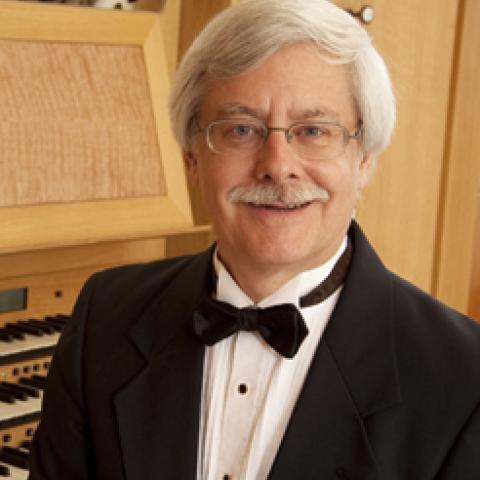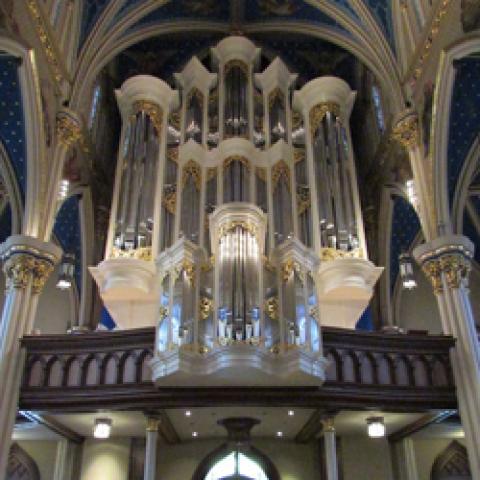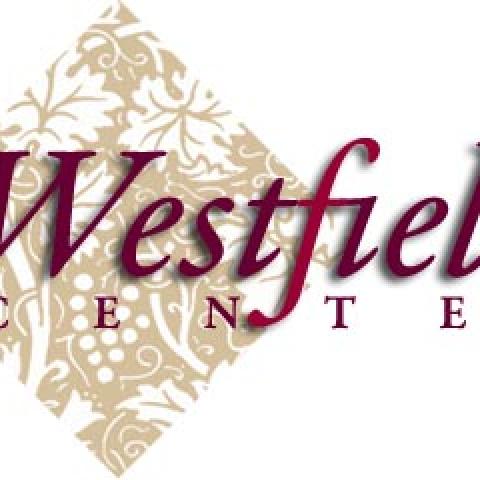An important project is happening in Göteborg, Sweden. In August, 1998, along with about 100 organists from all over the world, I attended the International Organ Academy of GoArt: Göteborg Organ Art Center, at Göteborg University, Sweden. This has become a major center of research, organ-building, teaching and performing. A recent visit there last year was the occasion to observe progress on the building of a four-manual, 54-stop, mean-tone organ after the style of the late-17th century in North Germany. The organ will be unveiled at the biennial International Organ Academy in Göteborg, August 5-18, 2000. For the background and purposes of GoArt, see the article by Pamela Ruiter-Feenstra (The American Organist, July, 1996) and their Web-page (URL: www.hum.gu.se/goart/organac.htm); here I will summarize briefly.
The Göteborg Organ Art Center is the brainchild of Hans Davidsson, a GU music faculty member and brilliant young organist and musicologist, working under the inspiration of Jacques Van Oortmersson and Harald Vogel. It was begun in January 1995 as an inter-disciplinary center for organ research and performance bringing together the strengths of the Göteborg University Musicology Department and the School of Music. It is now an independent center in the GU administrative structure. An international panel of musicians advises GoArt, including Jean Boyer, Pieter Dirksen, Frederick K. Gable, Ludger Lohmann, André Marçon, Kimberly Marshall, Hans van Nieuwkoop, Jacques Van Oortmersson, William Porter, Pamela Ruiter-Feenstra, Kerala Snyder, Axel Unnerbäck, Joris Verdin, and Harald Vogel.
GoArt's stated objective is to cover the entire spectrum of the art of the organ by linking the efforts of musicologists, performers, and organ builders, in order to study historic instruments, documents, music and performance practice issues. This blurring of traditional lines has led to a center that is bursting with energy and creativity and whose impact on the organ world is already keenly felt.
This multi-disciplinary approach has produced a number of tangible outcomes:
* the establishment of archives containing musical sources on micro-film, photographs and other media;
* education and research, with the emphasis on historically informed and discerning music-making;
* a wide-ranging collection of instruments, drawing inspiration from the many golden ages of organ playing;
* in-depth studies of the relationships between organ art and history, aesthetics, ideology and liturgy;
* dedicated well-rounded artistic training aimed at producing musicians who are able to balance intuition with intellect;
* the reconstruction of instruments on scientific principles which will serve as primary sources of information about performance practice.
The current six-year long project is entitled "Changing Processes in North European Organ Art: 1600-1970 - Integrated Studies on Performance Practice and Instrument Construction." This integration of performance, literature, and musicological research is linked together by the instruments--the hallmark of GoArt--valued as an indispensable research tool in the organ performance. This collection of organs in various styles includes a mean-tone organ by John Brombaugh in the Haga Church (2 manuals and pedal; 21 stops); a 19th-century French style organ built by the Dutch builder Verschueren (3 manuals and pedal; 43 stops, featured in the 1998 GoArt Organ Academy) housed in the recital hall of the School of Music; a "Father" Henry Willis organ built in 1871 housed and in the Örgryte Church (3 manuals and pedal, 31 stops); an instrument inspired by the Swedish Baroque style built by Gustavsson (2 manuals and pedal; 16 stops); and a pedal clavichord reconstructed by Joel Speerstra after the Gerstenberg instrument in Leipzig. (This is used to explore the connections between clavichord and organ techniques.)
Housed in the Örgryte Church, the organ currently in production is the aforementioned North German style mean-tone organ, using the work of Arp Schnitger as a primary model but also incoporating aspects by earlier builders such as Scherer and Fritzsche. Visually, it uses as a model the now defunct Schnitger organ of the Lübeck Dom. Tonally, the new organ is inspired by the organ of St. Jakobi, Hamburg, but also incorporates aspects of the organs of the Aa-Kerk, Groningen and St. Cosmae, Stade.
Some of the most sophisticated research into historic organ-building methods is being carried out and put into practice jointly by scientists of the Chalmers Institute of Technology in Göteborg and Master Organbuilders at GoArt (Hans Van Eeken, head draftsman; Mats Arvidsson, responsible for construction of the organ, excluding organ pipes; and Munetaka Yakoto, research and organ pipe production). The collaboration among these scientists and artisans has yielded new thoughts and discoveries in air-flow, acoustics of the room and the organ chamber, and materials and pipe construction.
One of the most interesting achievements of this project has been the retrieval of pipe making methods that were used until the time of the Industrial Revolution. The scientists at the Chalmers Institute were able to ascertain the formula for many metal alloys used by Schnitger and others. Organologists explored church records and the annals of builders of the time in order to re-construct the method of casting pipe metal on sand. This affects the cooling process of the pipe metal, thereby affecting the molecular structure, and ultimately the quality of the metal and the sound. Quite possibly this is the first time these techniques have been used since the early 18th century, and the people at GoArt are convinced that this old technique is, in part, responsible for the special sound quality of historic organs. More information on the North German organ, including the stop-list and a description of the church in which it is housed can be found on the GoArt web site: http://www.hum.gu.se/goart/w3b.htm#ngorp.
But all of this research could be mere mental gymnastics were it not brought to life by a vital and informed faculty in performance best displayed at the biennial GoArt conferences. In order to promote the next International Organ Academy, allow me to recall a few events from 1998.
This two-week course had several themes: one week devoted to "Aristide Cavaillé-Coll and the French Symphonic Organ," another to "The North German Organ" with special emphasis on the chorale fantasia, and an extended weekend symposium on "The Organ and Liturgy." The schedule was grueling yet rewarding, especially if you were willing to participate fully. Sessions began usually at 9 am and carried through until the late evening. It was not possible to attend everything, but a mere perusal of the program tells one of the richness of our legacy. Four primary kinds of meetings call the academy together (98% of which are done in English): master-classes, lectures, workshops, and recitals. Among some of the more engaging pedagogical experiences of the last academy were a session on Froberger by Ludger Lohmann of Stuttgart, a class on Alain by Jacques Van Oortmerssen (Amsterdam), an exploration of Franck's chorales by Jean Boyer (Lyon), and a class on Italian Baroque music by André Marçon (Bern).
The workshops were a cross between master-class and lecture and allowed listeners to focus on specific aspects of research as it relates to performance practice. Kimberly Marshall devoted two of her sessions to the genesis of early liturgical music for the organ and the music of Jeanne Demessieux. Pamela Ruiter-Feenstra unveiled some of her latest discoveries in the pedagogy of improvisation in the late 18th century. André Marçon led a detailed analysis of Frescobaldi's "Fiori Musicali" and alternatim practice in Baroque Italy. William Porter gave an insightful workshop on "Generating Principles of the Late 17th-century North German 'Praeludium'."
The lectures are too numerous to list but were nonetheless provocative and memorable. Jesse Eschbach, on the verge of the publication of his new book on Cavaillé-Coll, discussed the organ builder's thoughts on modernizing Classical and Post-Classical organs. Jean Ferrard discussed Cavaillé-Coll's relationships with Lemmens, Loret and Franck. Pieter Dirksen (a brilliant young musicologist who has recently published a book on the keyboard works of Sweelinck) spoke about Lübeck and Bruhns and the final stages of the North German chorale fantasia. Kerala Snyder explored Bach and the Lutheran liturgy and the unlikely topic of the connections between the French tradition and Buxtehude. Fenner Douglas gave a withering and yet very accurate appraisal of the neo-classic renovations that happened to historic French organs in the 1950s-70s.
And now to the heart of the matter--performance. Were it not for this aspect, GoArt may be little more than a meeting for musicologists. But in these two weeks, I heard fine organ playing on beautiful instruments.
In the Haga Church (Brombaugh mean-tone organ) André Marçon opened the academy with a moving performance featuring music of the Italian baroque. While the instrument is built in the North German style, the transparent colors of the principals admirably revealed the subtle singing quality of this repertoire. Marçon is steeped in this period, and displays his acumen beautifully through intelligent, colorful and expressive articulation and phrasing.
One of the great moments of the entire Academy was to hear William Porter on the same instrument, this time playing music of 17th-century North Germany. Two variation sets of Scheidt ("Vater Unser" and "Io son ferito lasso") were among the highlights of this program. Porter's playing of this music is rivaled by few others. Gauging each tempo correctly, using old fingering practices to expressive ends, discovering the beauty of the simplest of registrations, and knowing the architecture of this music are among the reasons why his playing is so remarkable. The program closed with a riveting performance of the Bruhns "Praeludium in G," but not before he improvised a chorale fantasy on "Gelobet sei Gott" that made one think it was Buxtehude at the organ!
The French symphonic organ was a featured instrument at this year's academy. Generous in scaling and voicing, even though the Verschueren organ is housed in a recital hall of limited acoustic, the organ is nonetheless colorful and brilliant without being overwhelming to the listener. The sounds of the montres and strings were particularly convincing. Jean Boyer's performance of Messiaen's La Nativité was one of the memorable moments of these two weeks. Boyer is an extremely intelligent man (as he displayed to us in his teaching and lecturing), and this intelligence is wedded to a musical soul. Ludger Lohman gave a stellar performance of the Vierne Fifth Symphony and Kimberly Marshall gave a wonderful overview of some of the great works of Demessieux. I regret missing a performance by Hans-Ola Ericsson of Livre du Saint Sacrament of Messiaen (the recital BEGAN at 11pm!!) but reports from reliable sources the next day glowed with unanimous approval. Apparently the audience was spellbound for the 21/2 hours of this event.
Director of GoArt, Hans Davidsson, apparently possesses all of the important gifts of the complete artist/teacher: intellect, creativity, vision and musicality. These were demonstrated throughout the conference but particularly as he was featured in a recital of the Third Part of Bach's Clavierübung, in the Bethlehem Church. This performance revealed a deep understanding not only of this great music, but also of the theology that lay behind it. It was a profoundly moving event.
Curiously, the recitals that seemed to encourage the most discussion afterwards were not organ recitals at all. Joris Verdin, harmonium player and organist from Belgium, completely amazed everyone by his subtle and expressive playing on the GoArt French harmonium. While this instrument was well-known and used by French organists in the 19th century it has since fallen out of use, especially in the United States where the harmonium uses a different wind system than the European version. The subtle nuances that he was able to achieve with this instrument were nothing short of miraculous and brought to life music which sounds little more than hum-drum on the organ. Equally noteworthy was an evening spent in the Gunnebo Castle in nearby Molndal. It was a marriage of sensations: there the audience sat in an 18th-century home listening to a music of the period played on a replica of an 18th-century double clavichord. The featured performers, Joel Speerstra and Ulrika Davidsson, played music of late 18th-century Germany while Pamela Ruiter-Feenstra improvised a charming sonata in late 18th-century style using the principles she had discussed only days before in her lecture. Here was a real unity of architecture, sound, music and knowledge that exemplified what GoArt is able to achieve.
GoArt is currently engaged in a number of publications, perhaps the most significant being a massive tome called The Organ as a Mirror of Its Time, edited by Kerala Snyder. This book, which will be available in the Fall 2000, traces the significance of the organ in western culture, particularly as building styles were affected by and helped shape liturgical practice, improvisation, and the secular music aesthetic. The specific foci include the organs of the North German Masters, Swedish organ-building practices and the French and German organs in the 19th century. Chapters on the organ reform movement and the latter-day performance practice movement are also included. Among the contributors are the current GoArt planning board and faculty.
Information on the upcoming GoArt International Organ Academy (August 5-18, 2000) may be found at http://www.hum.gu.se/goart/w-100b.htm. The focus will, of course, be the North German Baroque Organ and the conference will unveil the new instrument currently being finished. Performers and clinicians will include Harald Vogel, Daniel Roth, Ludger Lohmann, David Yearsley, Rudolf Kelber, Yuko Hayashi, Lynn Edwards, Pieter Dirksen, Paul Peeters, William Porter and many others. Contact information: Organ Academy, School of Music, Box 210, SE-405 30 Göteborg, Sweden; ph +46-31-773 52 11 or -773 52 06; fax +46-31-773 52 00; e-mail [email protected]
http://www.hum.gu.se/goart/w-109.htm#fee
In a time when the organ seems to be on the periphery of musical performance, and as awareness of the instrument even among the musically informed is at an all-time low, the Göteborg Organ Art Center has positioned itself to be a catalyst in the midst of this crisis. Their solution does not provide a single-style agenda, nor a bag-full of tricks meant simply to "thrill" audiences. Rather, its broad base reminds us of the richness of the legacy that has been given us and calls our attention again to the depth and breadth of the largest of all instrumental repertoires.





